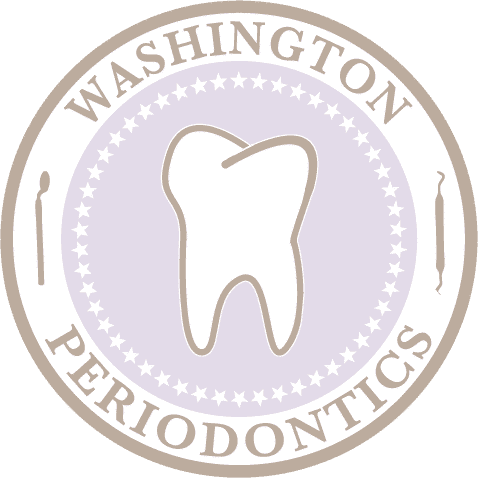Dentistry in a
state-of-the-art
Surgical Center.

Receding gums
Signs of
Receding Gums
The first sign of mild Gum Recession is often tooth sensitivity to hot or cold foods. As Gums recede, you may also see changes in the appearance of your teeth or notice that your teeth look longer and discolored.
If left untreated, Gum Recession can lead to more serious problems such as Tooth Loss, Bone Loss, and Gum Disease.
Causes of Gum Recession
There are many factors that can cause your Gums to recede such as:
- Poor practices regarding oral hygiene.
- Brushing one's teeth too vigorously and vigorously.
- Inflammation of the Gums, often known as Gingivitis or Periodontitis.
- Disposition determined by Genes.
- Alterations in Hormone levels.
- The usage of tobacco.
- Bruxism or the grinding or clenching of teeth.
- Teeth that are out of place.
- Lip or tongue piercings are also common.
Teeth Grinding
and Clenching
Brushing Aggressively
Periodontal Disease
Orthodontics
Oral Piercings
Tobacco Use
Genetics
Gum Recession Treatment
Soft Tissue Grafts
Connective Tissue Graft
Free Gingival Graft
Bone Grafting
Guided Tissue Regeneration
Crown Lengthening
FAQ's
Learn more about Receding Gums
At What Age Does Gum Recession Start?
How Can I Stop Receding Gums?
It takes a mix of good Oral Hygiene habits, lifestyle changes, and expert dental PERIODONTAL care to stop or slow down Gum Recession. Start by concentrating on mild Oral Hygiene practices. To prevent harming the Gum Tissue, clean your teeth gently and in a circular motion using a soft-bristled toothbrush. Include daily flossing to get in places a toothbrush could miss, like in between teeth and along the gum line. Early detection and professional cleaning to remove plaque and tartar buildup depend on routine dental exams and cleanings. Quitting smoking or using tobacco can greatly lower your risk of developing Gum Disease and Recession.
Wearing a night guard can help shield your Teeth and Gums from damage if you grind your Teeth at night. Orthodontic therapy for misaligned Teeth can help more uniformly distribute stresses across the Gums. Gum health can also be supported by consuming the right foods and keeping up a healthy lifestyle. It’s crucial to see a dentist Periodontist as soon as you discover any signs of Gum Recession since they may offer specific advice on how to stop additional Recession depending on your particular circumstances.
Is it Possible to Bring Back Receding Gums?
Improving Oral Hygiene practices may be able to reverse early Gum Recession, which can be caused by a variety of factors including ineffective brushing or slight Gum inflammation. On the other hand, advanced Gum Recession brought on by Gum Disease or any number of other causes could not be completely reversible.
If the reason of Gum Recession is something like forceful brushing, bad Oral Hygiene, or slight irritation, it may be possible to reverse the situation by making the necessary adjustments. You may be able to stop or even reverse minor Gum Recession by using the right brushing techniques, strengthening your Dental Hygiene routines, and taking care of any underlying causes. Complete reversal, however, might not be possible if Gum Recession is further severe and brought on by Gum Disease or other underlying problems. Early intervention is essential because addressing the root of the problem can stop future Recession and enhance Gum health.
What Is the Fastest Way to Heal Receding Gums?
The healing process for Gum Recession can be lengthy and variable depending on the underlying cause. Important efforts include maintaining proper Dental Hygiene, staying away from irritants, and addressing any contributing factors that may be present. For specific recommendations tailored to your needs, talk to your Periodontist.
First, make changes to your oral hygiene practice by switching to a soft-bristle toothbrush and utilizing a gentle cleaning motion. Include flossing every day to get rid of plaque and food bits stuck between your teeth and gums. Don’t brush too vigorously, and think about using a mouthwash your dentist suggests. If you observe signs of teeth grinding, using a night-guard while you sleep might lessen the stress on your gums. Maintaining a healthy diet and giving up tobacco products can also help your Gums.
It’s crucial to keep in mind that Gum Tissue needs time to repair. Gum Recession can be halted and healed by consistently practicing proper Oral Hygiene, going to routine dental checkups, and addressing any underlying problems. To get tailored advice on your unique circumstance, speak with a dentist or Periodontist.
What Is the Best Treatment for Gum Recession?
-
The deep cleaning procedure
known as Scaling and Root Planing. - Gum Grafting
- Treatment using Orthodontics.
- Treatment and prevention of Gum Disease.
- Stop Teeth Grinding and Clenching
- Education about maintaining good Oral Hygiene.
Do I Need Surgery for Receding Gums?
Can You Explain What a Gum Graft Is?
When Is It Too Late for Gum Grafting?
What Is Bone Grafting?
Washington Periodontics
If you are concerned about gum recession, it’s important to see a dentist or periodontist to determine the cause and develop a treatment plan.
At Washington Periodontics, we are dedicated to helping our patients achieve and maintain healthy smiles. We offer a variety of treatment options for gum recession and can work with you to develop a plan that is right for you. Contact us today to schedule an appointment!
